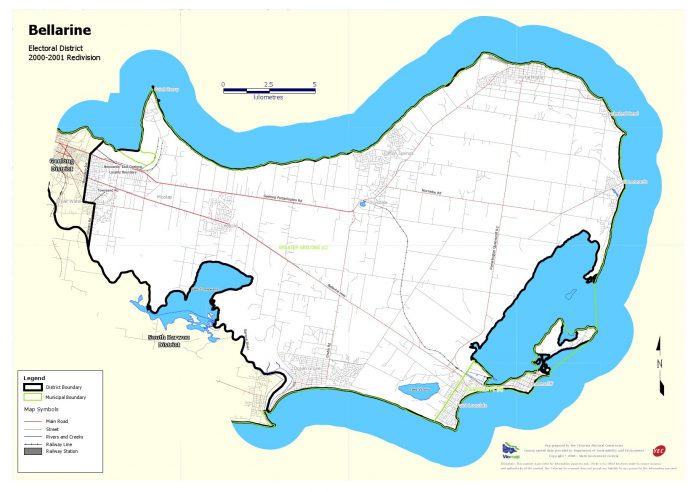By JOHN VAN KLAVEREN
THE “twin towns” of Ocean Grove and Barwon Heads should be together in the state seat of Bellarine, the Liberal party has told a review of electoral boundaries.
The seat, which Labor’s Lisa Neville holds by the region’s smallest state margin of 1.4 per cent, could become increasingly marginal under the proposal.
The submission said Connewarre and Mt Duneed should also be included in Bellarine.
The existing boundary, between the seats of Geelong and Bellarine, would move east, adding Point Henry and Moolap to Geelong so it was within a legal threshold for number of voters.
The Independent reported in March that South Barwon, Bellarine and Lara were all larger than the average electorate size of 41,473 voters. State law allows a differentiation of up to 10 per cent.
In a counter submission, Labor said Bellarine should only lose the suburbs of St Albans and Whittington to Geelong.
Deakin University lecturer Dr Geoff Robinson said any changes would shave the tight margin for Bellarine.
“The problem for the ALP is that Bellarine has to shed numbers but they’re trying to retain it as a Labor seat.
“The Liberals are trying to make Bellarine into a Liberal seat by adding Barwon Heads and picking up country areas like Moriac. They’d like to make it into a marginal Liberal seat if possible.”
Dr Robinson said the Liberals also wanted to make South Barwon into a southern Geelong suburban seat to improve its hold for incumbent MP Andrew Katos.
“Obviously, the ALP is trying to avoid that but, given the high voter numbers in South Barwon, something has to give,” he said.
Dr Robinson said previous electoral boundary revews had favoured natural boundaries such as the Barwon River.
“But because of the way the growth areas are positioned, it might be difficult to retain it as a boundary in this redistribution,” Dr Robinson said.
“While the shifting boundaries will make a difference, the real impact will be from the population growth over the next few years, which could change voting trends within seats.”







